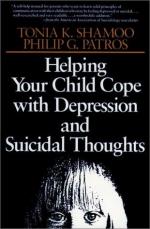|
This section contains 5,606 words (approx. 19 pages at 300 words per page) |

|
To many people, suicide—intentional self-murder—is an asocial act of a private individual, yet sociology grew out of Durkheim's argument ([1897] 1951) that suicide rates are social facts and reflect variation in social regulation and social interaction. The concept of suicide derives from the Latin sui ("of oneself") and cide ("a killing"). Shneidman (1985) defines "suicide" as follows: "currently in the Western world a conscious act of self-induced annihilation best understood as a multidimensional malaise in a needful individual who defines an issue for which suicide is perceived as the best solution." Several conceptual implications follow from this definition.
Although suicidal types vary, there are common traits that most suicides share to some extent. (Shneidman 1985). Suicides tend to
- Seek a solution to their life problems by dying
- Want to cease consciousness
- Try to reduce intolerable psychological pain
- Have frustrated psychological needs
- Feel helpless and hopeless
- Be ambivalent about dying
- Be...
|
This section contains 5,606 words (approx. 19 pages at 300 words per page) |

|


